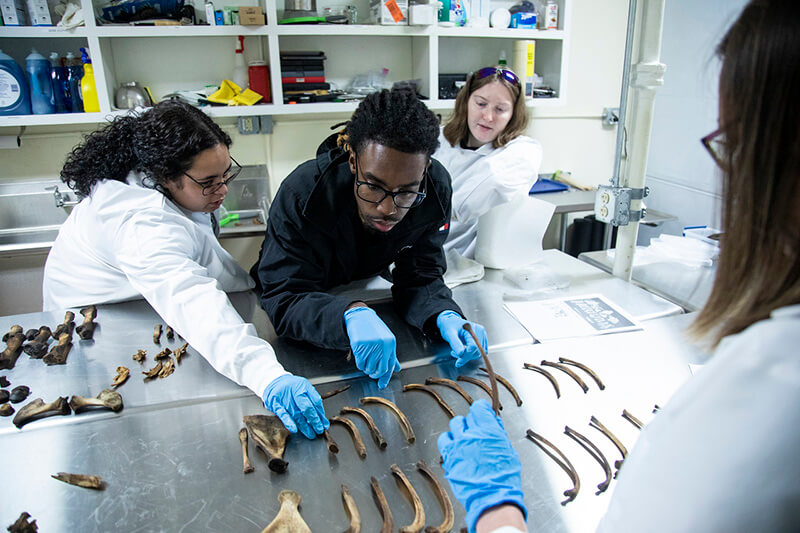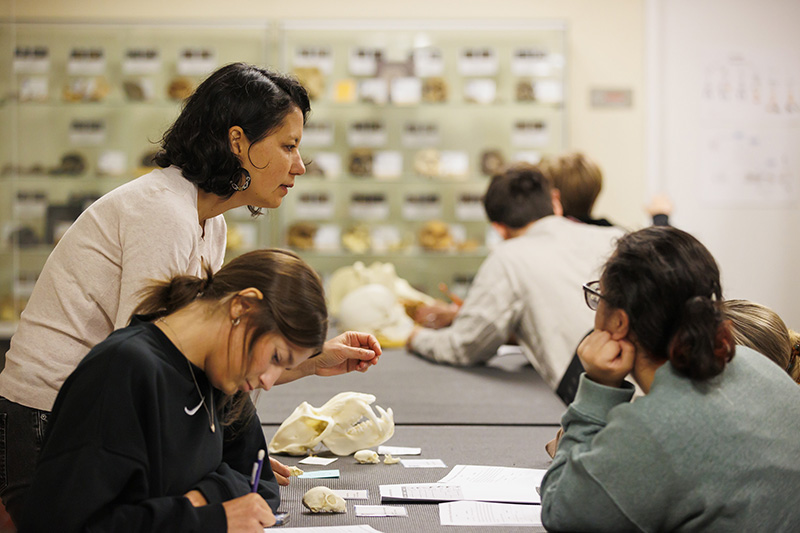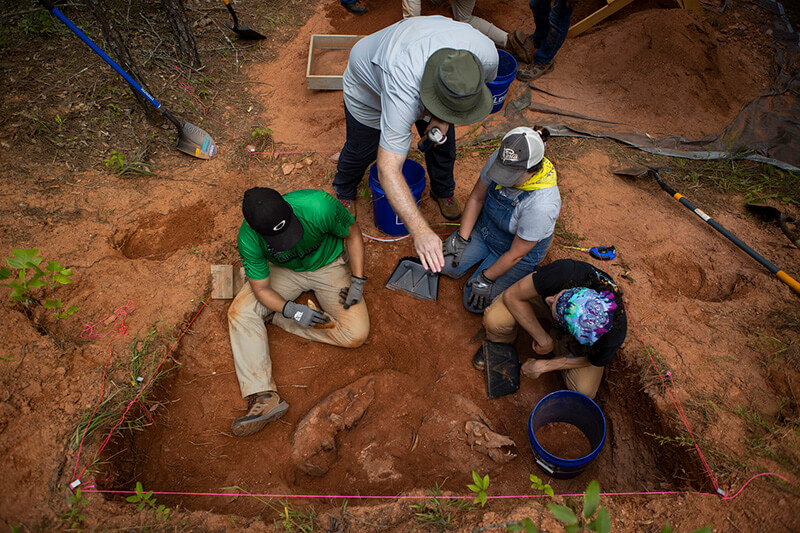
deep In their bones
UWG Anthropology Professors Piece Together the PastShare this page
In the University of West Georgia’s Biological and Forensic Anthropology Laboratory (BAFAL), lives long forgotten are resurrected by piecing together clues from microscopic crevices of bones and teeth. With every scan and scrape, the secrets of ancient worlds whisper through centuries, waiting to be unearthed by the sharp eyes and steady hands of those who know how to listen.

Drs. Corey and Isabel Maggiano have led BAFAL as director and assistant director, respectively, since 2015. As biological anthropologists, most of their work is focused on the microstructure and chemistry of bone and how it records people’s lived experiences in structures invisible to the naked eye. As anthropology faculty, they enhance students’ experiences by providing mentorship, fostering engagement and creating personalized learning opportunities. The results of their work, often published in anatomy journals, reflect their multidisciplinary significance.
“Humanity is 60 times older than history, so in studying what happened before writing and before cities and farms, we are learning about the actual ways humans have survived on the planet,” Corey explained. “Without understanding human origins, students don't know they share common connections in Africa. They don't know there's been many creatures that could walk on two legs and even some that had stone tools and used fire. They don't benefit from knowing the real reasons behind our adaptations that helped us survive in various environments over hundreds of thousands of years.”
Within BAFAL, world-first research efforts have taken place. This includes a micro-isotopic analysis of oxygen isotopes in bone layers, similar to tree rings, that enables the Maggianos to trace ancient human movements, environmental conditions and weather patterns, providing new insights for archaeology, medicine and forensic science.
“Seasonal weather patterns act as a clock, timing other biological observations we can make from a skeleton,” Corey continued. “Precipitation changes in human bone tell us if people in a specific region were involved in trade or if two individuals faced the same drought or deluge that would have impacted many aspects of their experience. These possibilities impact our understanding of bone growth and diseases that affect us today. They can even help with the identification of unknown individuals or in forensic contexts.”

Another breakthrough research project was the first successful effort in reconstructing bone microstructures. The Maggianos used a synchrotron Micro-CT to scan a small bone fragment and, with computer assistance, created a detailed 3D model to study bone growth and branching. This project was runner-up for Best Paper of the Year in the Journal of Anatomy.
But whether the couple is on expeditions in Belize or collaborating with labs in Germany, they always bring their experiences and lessons learned back to the classroom to benefit their students.
“BAFAL is a unique place for students to learn and grow, offering the type of lab experience you might see at larger institutions but in a smaller, supportive and close-knit community,” Isabel shared. “By far our students' favorite subject is human origins – we have to know how beautiful and useful our differences are to accept them and truly understand shared experiences.”
In the past decade, UWG has successfully formed an interdisciplinary forensic certificate program and, more recently, a Bachelor of Interdisciplinary Sciences in Forensic Science and Investigation. Isabel explained these fields have been recently revolutionized due to the development of better imaging techniques that have shifted the understanding of bone structure, growth and development.
“Much of this research is extremely relevant considering our aging society, increased sedentism and the risk of osteoporosis,” Isabel added. “For example, we are currently collaborating internationally on ways to push past current limits on our understanding of bone and how its study can teach us about the human experience.”

UWG also stands out amongst its peers due to faculty-directed undergraduate research that complements classroom learning and provides additional educational opportunities that transform students into scholars and experiences that equip them with the knowledge they need for their careers even before graduating.
“Undergraduate research opens doors to confidence and transferable skills that both encourage students to stick with their academic efforts and prepare them to impress in their professional pursuits post-graduation,” Corey said. “We always tell our students a degree is a good start, but a project you designed, mistakes you corrected and peers you trained – that’s the finish line. Undergraduate research shows that you excelled outside the classroom, went beyond minimum expectations and are engaged by – rather than intimidated by – evaluation and feedback.”
“In other words, undergraduate research can be the thing that changes everything, pulling graduate school or a dream career within reach,” Isabel concluded. “BAFAL at UWG is an ideal place to start.”
To learn more about UWG’s BAFAL, visit the lab’s website.
photography by Julia Mothersole
